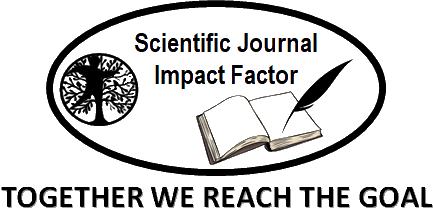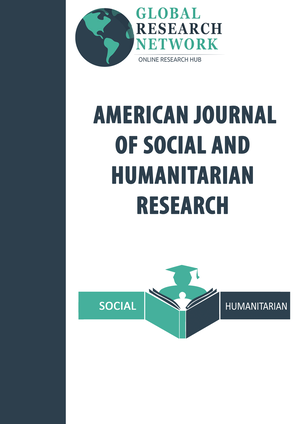Modélisation Thermoradiative Et Géospatiale Du Confort Thermique Urbain En Milieu Tropical De Haute Altitude : Application A La Ville Nouvelle De Tana-Masoandro
Abstract
Cette étude analyse le phénomène d’îlot de chaleur urbain (ICU) dans un contexte tropical d’altitude à travers la modélisation thermoradiative et géospatiale de la ville nouvelle de Tana-Masoandro (Madagascar). En combinant les outils open-source Python, QGIS et le plugin UMEP, la recherche propose une approche intégrée pour évaluer les interactions entre morphologie urbaine, rayonnement solaire, propriétés thermiques des matériaux et confort thermique extérieur. Le modèle développé simule la température radiante moyenne (Tmrt), l’indice de confort thermique (PET) et le facteur de visibilité du ciel (SVF), permettant de cartographier la distribution spatiale des zones de surchauffe. Les résultats révèlent que la densité bâtie, la faible végétation et les surfaces à faible albédo accentuent l’intensité des ICU, tandis que la végétalisation et les matériaux réfléchissants réduisent la Tmrt de 15 à 20 °C. Cette approche hybride démontre la pertinence scientifique et opérationnelle du couplage Python–QGIS–UMEP pour la planification bioclimatique. Elle offre un cadre reproductible et adaptable aux villes tropicales en développement, contribuant ainsi à la conception d’espaces urbains plus résilients, confortables et énergétiquement efficients.
Keywords
Full Text:
PDFReferences
Ali-Toudert, F., & Mayer, H. (2006). Numerical study on the effects of aspect ratio and orientation of an urban street canyon on outdoor thermal comfort in hot and dry climate. Building and Environment, 41(2), 94–108.https://doi.org/10.1016/j.buildenv.2005.01.013
Bouyer, J. (2009). Modélisation et simulation des microclimats urbains : Étude de l’impact de l’aménagement urbain sur les consommations énergétiques des bâtiments [Thèse de doctorat, Université de Nantes]. HAL Archives. https://hal.science/tel-00459721 ;
Giridharan, R., Ganesan, S., & Lau, S. S. Y. (2007). Daytime urban heat island effect in high-rise and high-density residential developments in Hong Kong. Energy and Buildings, 36(6), 525–534. https://doi.org/10.1016/j.enbuild.2003.12.016 ;
Instat Madagascar. (2023). Rapport annuel sur la population et l’urbanisation à Antananarivo. Institut National de la Statistique, Antananarivo. ;
Lindberg, F., Grimmond, C. S. B., & Holmer, B. (2018). Urban Multi-scale Environmental Predictor (UMEP) for climate studies in cities. International Journal of Climatology, 38(9), 3908–3928. https://doi.org/10.1002/joc.5535 ;
Masson, V., Lemonsu, A., Hidalgo, J., & Voogt, J. A. (2020). Urban climate, urban metabolism and the urban heat island: A review and perspective. Renewable and Sustainable Energy Reviews, 134, 110248. https://doi.org/10.1016/j.rser.2020.110248 ;
Oke, T. R. (1973). City size and the urban heat island. Atmospheric Environment, 7(8), 769–779. https://doi.org/10.1016/0004-6981(73)90140-6 ;
Oke, T. R. (1987). Boundary Layer Climates (2nd ed.). Routledge. https://doi.org/10.4324/9780203407219 ;
Santamouris, M. (2015). Analyzing the heat island magnitude and characteristics in one hundred Asian and Australian cities and regions. Science of the Total Environment, 512–513, 582–598. https://doi.org/10.1016/j.scitotenv.2015.01.060
Synnefa, A., Santamouris, M., & Akbari, H. (2007). Estimating the effect of using cool coatings on energy loads and thermal comfort in residential buildings in various climatic conditions. Energy and Buildings, 39(11), 1167–1174. https://doi.org/10.1016/j.enbuild.2007.01.004
Tanimoto, J., Hagishima, A., & Kinouchi, T. (2005). Development of a simple simulation model for the heat island phenomenon considering buildings, roads and greenery. Energy and Buildings, 37(3), 219–230. https://doi.org/10.1016/j.enbuild.2004.07.009
United Nations-Habitat. (2022). Sustainable Urban Development in Tropical Cities: Adapting to Heat and Climate Risks. Nairobi: UN-Habitat Publications.
DOI: http://dx.doi.org/10.52155/ijpsat.v54.1.7667
Refbacks
- There are currently no refbacks.
Copyright (c) 2025 Tolotra Stephane RANAIVOSAMIMANANA

This work is licensed under a Creative Commons Attribution 4.0 International License.




















